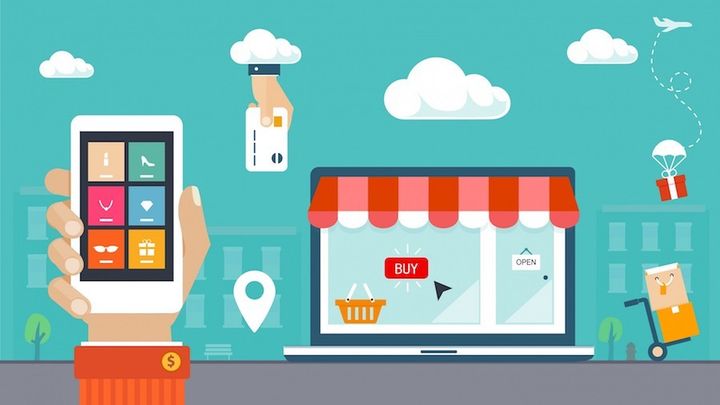
For years, retail industry experts have sounded the death knell for the traditional “brick and mortar” store and heralded the inevitable rise of e-Commerce. Tech industry visionary Marc Andreessen told PandoDaily in 2013 that, "Retail guys are going to go out of business and e-Commerce will become the place everyone buys. You are not going to have a choice." And yet, the in-store shopping experience is not dying, but evolving. Online shopping and the in-store experience are actually merging into a single omni-channel shopping experiences that seamlessly blends physical and digital interactions. In order to be successful in this new omni-channel, retailers can no longer operate their digital portals and physical stores as separate, competing entities. Instead, they must pursue an integrated approach that leverages the best that both have to offer the consumer.
It’s not a surprise that so many industry experts have been predicting the end of the store. Online retailers don’t have to deal with most of the limitations faced by store owners including limited shelf space, expensive real estate, and geographic limitations. This lack of overhead and physical dependencies allows them to offer steep discounts and an enormous inventory. With the proper distribution network, online retails can sell virtually anything to anyone anywhere in the world 24 hours a day. And now that retailers like Amazon are investing in new services like easy returns, free shipping, and same day delivery, consumers have even less reason to head to their local shop.
E-Commerce emerged in the 1990's as a separate channel from the rest of the company’s brand efforts. It was staffed by a separate team with its own targets, technologies, and inventory. Since then, the online ecosystem has only gotten more and more crowded. New social media platforms, brand sites, mobile websites and mobile apps appear on an almost daily basis – and each one is clamoring for the consumer’s attention. And as each new channel or device has appeared, retailers have responded with the same isolated approach. As a result, consumers are bombarded by a chorus of disconnected, confusing voices.
This is just the opposite of what the consumer wants. A fragmented digital brand presence is confusing and can drive customers to a competitor. Customers see only a single brand and they expect a unified experience. And when they don’t get it, they are more likely to take their business somewhere else. To make matters worse, most consumers won't even give the retailer a chance to address the cause of their dissatisfaction.
Another problem with many e-Commerce sites today is a lack of differentiation. Shoppers have different personalities and motivations. Some know exactly what they want; others want inspiration. Some look for practical items; others just want to buy something fun. Physical retailers have known this for ages and have tailored their physical store design and sales associates training to meet the need for an inspiring and engaging retail experience.
But this rich and adaptive model has never been fully embraced by online retailers. Most e-Commerce sites cater to a single personality: the impatient, price-conscious shopper who knows what she wants and is always searching for a bargain. The average web store is all about price, product availability and speedy delivery. These are critical requirements for any store and it’s certain that e-Commerce would never have succeeded had it not mastered them. But these days, it is not enough. In addition to being fast, efficient and secure, online retailers must also be inspiring, informative, and entertaining.
The physical store is not disappearing after all. It remains the retail touch point with the highest frequency. A 2015 PwC survey found that 36 percent of respondents still go to a physical store at least weekly, more than online via PC (20 percent), tablet (10 percent), or mobile phone (11 percent).
Smart retailers realize that they must embrace holistic strategies based on blended online and offline experiences to improve the customer experience, increase loyalty and drive sales. This represents a new era of omni-channel retail experiences. The customer experience for both the online and physical stores must be flexible, fluid, visual and visceral.
The challenge for retailers is to determine how to leverage new technologies to more closely tie their digital realm to their in-store shopping experience. Retailers are experimenting with a wide range of strategies and solutions, including, beacons and retail apps, smart digital signage, digital transactions, virtual mannequins and having the store be a browse and order hub. The next question becomes "how can a retailer create this omni-channel experience without driving up the amounts of time and money it must spend to manage all of these resources?"
Below are four recommendations on how to do so:
1. Look beyond channels: Pursue an integrated approach. Recognize that digital is not a separate channel. Abandon the idea of digital as a distinct business, and instead build and execute a more integrated strategy.
2. Collect data to understand the customer journey: You can’t satisfy your customers’ needs and desire until you understand how they want to interact with your organization. Smart brands take the time to document the most important customer personas and understand their critical user stories, pain points and moments of truth.
3. Create and curate great content: Customers crave experiences that are relevant, personal, visual, social, and immediate. Focus on the creation and curation of more authentic messages that speak directly to the category shopper and evolve from the promotional, traffic-focused approach.
4. Integrate systems and coordinate teams: Establish processes and incentives that unite teams that might not work together. They will be responsible for designing the experiences that correspond to the identified needs or your most important customer personas. On the technical side, automate the delivery of relevant experiences based on contextual data from multiple sources.
None of this can be accomplished overnight, so don’t rush to upend your current model all at once. That will just create more confusion and dissatisfaction among both your employees and customers. Take an incremental approach by first mapping your customers’ journeys through your various physical locations and digital platforms. Use this data to identify the areas of greatest pain. Next, build cross-departmental teams to deploy solutions based on open technologies that will integrate with your existing IT infrastructure.
There are some companies that help companies create and deliver content-rich mobile shopping experience. Take an example of CoreMedia that helps companies blend content and commerce to reach consumers and business buyers through omni –channel. Their work with retailers like Homebase and Office Depot shows that a new form of curated, media rich online shopping is possible and can be successful. Companies that don’t take action now risk becoming case studies for why retailers fail in the 21st century.
